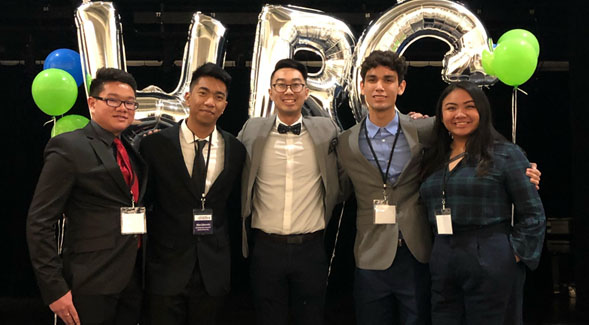Asian Student Organization Provides Community and Cultural Awareness
The Society of Asian Scientists and Engineers gives students resources to shape careers and provides a safe space.

Uniting academics, culture, and networking, the Society of Asian Scientists and Engineers (SASE) chapter at San Diego State University is part of a nationally recognized organization.
SASE gives students networking opportunities and academic support while providing a sense of community by focusing on Asian representation in professional fields. May is APIDA History month and SASE is a key resource and a safe space for Asian American students on campus.
Kaylani Cayabyab, a fourth-year student majoring in applied math, is president of the SDSU SASE chapter. Once she graduates in spring 2022, she hopes to be a financial analyst.
SASE is guided by faculty advisor and assistant dean of engineering for student affairs Theresa Garcia. The SDSU News Team spoke to Cayabyab about the organization’s role on campus.
What does SASE focus on?
We aim to not only provide a safe space and resources to STEM majors at SDSU but also give them academic and professional support once they graduate. We were nationally recognized in 2019 when we decided to integrate as a chapter of SASE, before which we were the Pacific Asian Society of Engineers, or PASE.
How does the organization help students in the community?
We give members a safe space, especially because we are an academic organization and a cultural organization. One of the main topics that we focus on and emphasize as a national chapter is Asian representation within the professional field. We focus on giving members networking and resource support so once they graduate, it helps them get into the professional field.
What made you want to join the organization?
I wanted to join because when I was a first-year, I was also a commuter. It was hard to find people within my major and people who shared the same interests as me. Through the engineering website, I found this organization. I joined because I felt kind of alone, and I also needed help with my classes. Having that support system, academically, really helped me throughout my first couple of years in college. I joined the executive board my second year. This is my first year as president.
What does this organization mean to you? How has it grown in recent years?
It started as just an engineering organization. I got to see it grow from being just engineers to accepting STEM majors and also business majors. Being a female president, I got to see a lot of growth in the demographics of those who joined the organization. When I joined, it was mostly males. But throughout the years, I noticed more and more girls showing up. That was pretty nice to see.
What events do you host?
We do professional development workshops and study sessions weekly. We also bring back our alumni for meet-and-greets and Q&As with them, especially if they're in fields that people are interested in. Events are also hosted by the national organization. We have conferences that we travel to, and since we're separated into regions, we attend the West Regional Conference. We attended one in 2019 that took place at UC Santa Cruz. It's an opportunity to network and get academic and professional development by attending workshops. It’s a place where we get to meet the other chapters, and we also get to meet bigger companies that work with sales and local companies around the area.
How has COVID-19 impacted SASE?
It's definitely taken a huge toll on us, especially because we were only established in 2019. Because of the COVID-19 restrictions and guidelines and having to transition to an online environment, there has been a big decrease in participation from our members. It is totally understandable because Zoom burnout is a thing. So we refocused our general meetings with interaction-based events.
Are there any significant milestones you wish to highlight?
In 2020, we attended our first national conference, which is different from a regional conference in the way that they have a career fair. You're able to connect to more companies searching for an internship or job. It's more focused on students who are seeking to gain a position from it. There were a few people from our organization who came out of the conference with an internship when we attended.



